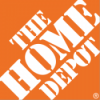Identification Labs is the largest North American barcode testing center for barcode symbols, and our web-based testing programs are utilized by several of the largest U.S. retailers, distributors, and manufacturers. This GS1-128 shipping label glossary provides the definitions for terminology used in barcode print quality assessment and compliance support.
PHYSICAL BARCODE PARAMETERS
Dithering – fuzzy edges on barcodes or patterns of black dots on a label are examples of dithering. Dithering can result when a label file is subject to compression, scaling, or conversion between file creation and printing.
Height – measurement of the height of a linear barcode. The height of most linear barcodes is measured from the top to bottom of the vertical bars that make up the barcode. Text above or below the barcode is not included in the height. Bearer bars (horizontal bars above and below the barcode) are not included. If the bars in the barcode are different heights, the height of the shortest bars is used for the height of the barcode.
Quiet Zone – space to the left and right of a linear barcode. There cannot be text or other printing in this space. If a barcode is printed on a GS1-128 shipping label, the full quiet zones must fit on the label.
X-dimension – measurement of the narrowest element of the barcode and affects the overall width of the barcode.
ISO/ANSI Evaluation Parameters
Edge Determination – pass/fail parameter confirming that the scan reflectance profile contains an appropriate number of bars and spaces
Minimum Reflectance – pass/fail parameter comparing the reflectance of the darkest bar element to the reflectance of the lightest space element.
Minimum Edge Contrast – edges are the transition between every bar and space in the scan reflectance profile. This is a pass/fail parameter based on the smallest edge contrast.
Symbol Contrast – graded parameter based on the difference between the darkest/lowest reflectance and the lightest/highest reflectance.
Modulation – graded parameter based on the relative difference between wide elements and narrow elements.
Defects – graded parameter for reflectance irregularities within an element (bar or space). These appear as white spots on a black bar, or black spots in a white space.
Decodability – graded parameter based on how accurate the bar and space widths are compared to a perfect reference decode.
Decode – pass/fail parameter indicating if the bar and space pattern can be decoded based on standard decode algorithms.
Symbol Grade – value from 4.0-0.0.
Print Quality (ISO/ANSI Print Grade) – standardized measurement of barcode print quality. Requires use of specialized barcode verification equipment which analyzes nine parameters measured in 10 scans to determine the overall print quality grade. Full ISO/ANSI Print Grades are presented in the format “(2.5/10/660)”, which shows the Symbol Grade, the Aperture, and the Wavelength:
- Symbol Grade – value from 4.0 – 0.0, with 4.0 being the highest print quality, and 0.0 being the lowest. These are also expressed as letter grades from A-F.
- Aperture – diameter of the light source used to read or verify a barcode. The appropriate aperture size varies depending on the size of the barcode and the application, all defined in the GS1 General Specifications.
- Wavelength – wavelength of light source used to verify the barcode. 660-670 nanometers is a common standard and is a red light. “WL” indicates that a white light source is used.
Scan Grade – the grade for one of the 10 scans performed during barcode verification. The scan grade is the lowest scoring parameter grade for that scan.
Scan Reflectance Profile – graphed output from verification equipment. Represents the way a barcode is “seen” by the verifier. The print quality parameter grades are determined based on the values and characteristics displayed in the scan reflectance profile.
Symbol grade – the overall grade for a barcode. This grade is determined by averaging the 10 scan grades.
Verification Scan Report – detailed analysis from a barcode verifier that shows the ISO/ANSI Print Quality Grade. Also provides the verification details and parameter scores.
Non-Compliant (Defect) Issues
Abrasion – physical damage to the printed or label surface. GS1-128 shipping label materials must be resistant to abrasion. GS1-128 shipping label placement, carton packing, and shipping procedures must be implemented that minimize exposure to abrasion in transit.
Burn lines – visible as white vertical voids running from the top to the bottom of a label/barcode printed with a thermal printer. These are caused when one or more heat elements in a print head fail. In thermal printers, print heads are consumable parts and must be replaced when they fail. Burns will impact all labels printed until the printhead is replaced.
Ribbon creases – visible as white voids, often diagonal, in the printing from a thermal transfer printer. These are caused by the printer ribbon being folded or creased during printing. In the area of the crease, the ribbon material does not adhere to the GS1-128 shipping label, leaving a void.
Smudging – poor ribbon adhesion to label stock or inferior ribbon materials can lead to smudging. Ribbons with a low resin content/high wax content are typically not suitable for use in logistic markings. Even light incidental contact with the printing can cause it to smudge.
White spots – spots in the printing, often caused by inadequate heat and pressure, or a dirty printer.
Wrinkled label – the label not applied smoothly, applied on an uneven carton surface, or a label with poor adhesion that has partially come off the carton and adhered to itself or the carton unevenly.
GS1-128 Label Placement
Carton pack configuration – the way cartons are packed and configured for shipping. Abrasion and smudging can be magnified when labels are exposed and rubbing against other material.
Flap seam – the seam created by the carton opening. The area where flaps meet can be uneven due to the gap between the flaps or tape used to close the carton. Labels placed over a flap seam need to be cut in order to open a carton. This is a poor location for GS1-128 shipping label placement.
Natural bottom – the panel with the largest surface area. A carton is most stable when resting on its natural bottom. This is important to placement considerations because a carton it less prone to tipping when oriented this way.
Short carton – carton with side panels that are not tall enough to accommodate normal GS1-128 shipping label placement.
Tall carton – a carton where the natural bottom is not also the panel with the carton opening. Label placement may have special instructions for this type of carton.
Wrapped label – label placed over the edge of a carton. Wrapped labels and especially wrapped barcodes can impact scannability.
Printing equipment
 Fuser assembly – area of a laser printer where heat and pressure are applied to cause toner to fuse to the label.
Fuser assembly – area of a laser printer where heat and pressure are applied to cause toner to fuse to the label.
Guides – in the paper path of a printer, guides ensure that the stock is properly aligned. Poorly adjusted or ineffective guides can lead to margin and quiet zone issues.
Label stock – coated/uncoated, matched to printer, application, and supply chain requirements.
Laser printer – printing method that uses electrostatic charge and heat to arrange and fuse toner particles.
Printhead – component of a thermal printer that generates heat. Print heads are consumable parts and must be replaced when they fail. Burn lines are caused by failing print heads.
Ribbon – material used in thermal transfer printing. Wax and resin are two key ribbon components. The ratio of these materials will impact the durability of the printing. Low resin/high wax ribbons are typically not suitable for use in logistic markings. Ribbon selection should take into account the application, environment, and printing equipment.
Test pattern – thick black box printed as part of quality control practices to identify print burns, ribbon creases, and proper stock alignment.
Thermal printer – category of printers that use heat to print. Many thermal printers are capable of both direct and thermal transfer printing.
- Direct thermal printing – printing method that uses heat to alter heat sensitive paper.
- Thermal transfer printing – printing method that uses heat to cause heat sensitive ribbon to adhere to a label.
Toner – powdered ink particles that respond to the electrostatic charge. Toner quality can impact print quality and print durability. OEM toner is generally preferred, while recycled or third-party toner can have lower quality.
Barcode scanning and GS1-128 shipping label verification equipment
Aperture – diameter of the light source used to read or verify a barcode. The appropriate aperture size varies depending on the size of the barcode and the application, all defined in the GS1 General Specifications.
Automated high-speed sortation scanner – Fixed mount scanner designed to read carton barcodes moving at high speeds.
Calibrated Conformance Standard Test Card – NIST traceable calibration card. Used to confirm that a verifier is accurately measuring and analyzing barcodes.
GS1 Certified Verifier – full ISO/ANSI print quality verifier that has been certified by the GS1 Organization to verify certain types of GS1 barcodes.
Hand scanner –portable barcode scanning device.
Verifier – device used to measure barcode quality.





Comments are closed.